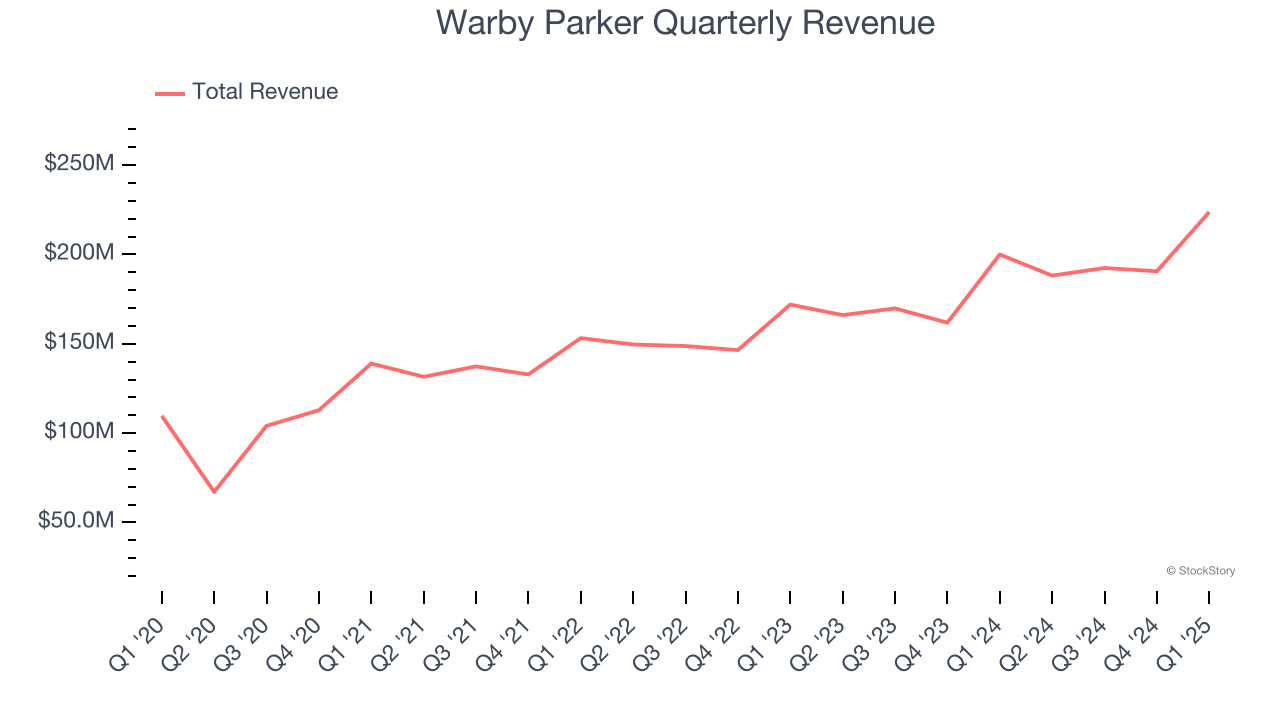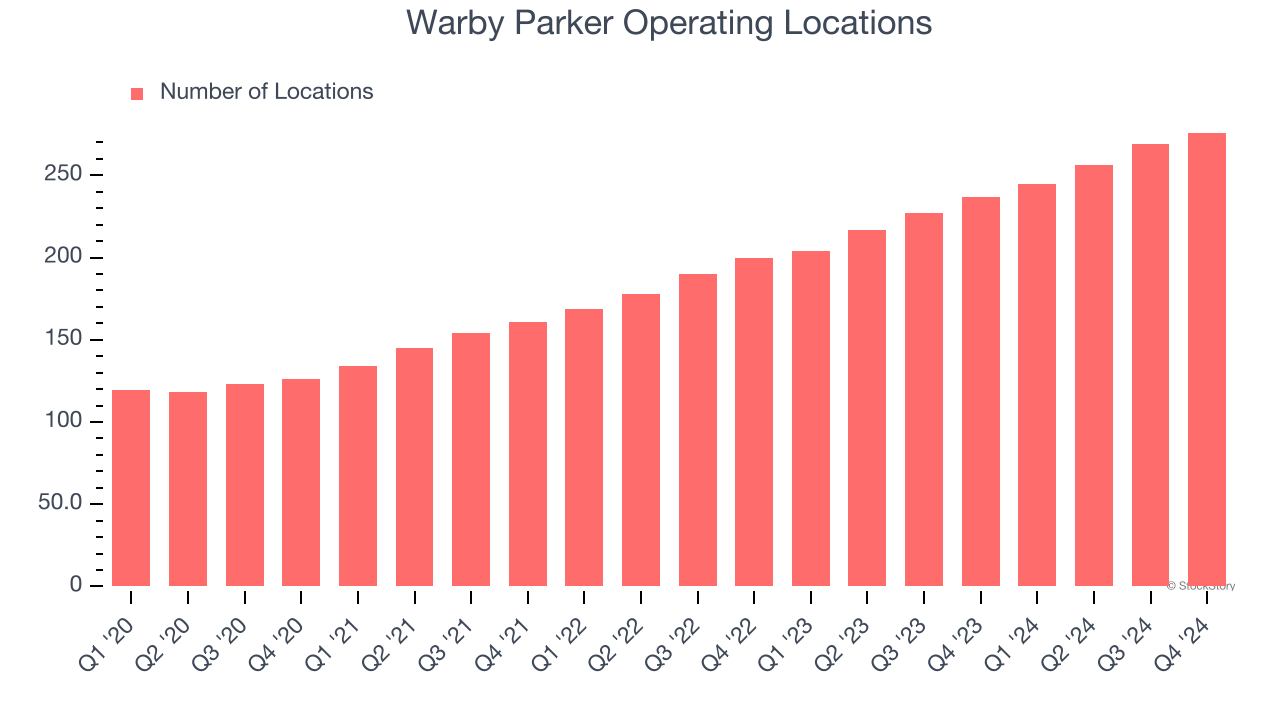
Eyewear retailer Warby Parker (NYSE: WRBY) fell short of the market’s revenue expectations in Q1 CY2025, but sales rose 11.9% year on year to $223.8 million. The company’s full-year revenue guidance of $877.5 million at the midpoint came in 0.7% below analysts’ estimates. Its GAAP profit of $0.03 per share was 55.9% below analysts’ consensus estimates.
Is now the time to buy Warby Parker? Find out by accessing our full research report, it’s free.
Warby Parker (WRBY) Q1 CY2025 Highlights:
- Revenue: $223.8 million vs analyst estimates of $225.5 million (11.9% year-on-year growth, 0.8% miss)
- EPS (GAAP): $0.03 vs analyst expectations of $0.07 (55.9% miss)
- Adjusted EBITDA: $29.21 million vs analyst estimates of $27.81 million (13.1% margin, 5% beat)
- The company dropped its revenue guidance for the full year to $877.5 million at the midpoint from $885.5 million, a 0.9% decrease
- EBITDA guidance for the full year is $94 million at the midpoint, in line with analyst expectations
- Operating Margin: 1.1%, up from -2.6% in the same quarter last year
- Free Cash Flow Margin: 5.9%, up from 1.7% in the same quarter last year
- Active Customers: 2.57 million
- Market Capitalization: $1.96 billion
Company Overview
Founded in 2010, Warby Parker (NYSE: WRBY) designs, manufactures, and sells eyewear, including prescription glasses, sunglasses, and contact lenses, through its e-commerce platform and physical retail locations.
Sales Growth
A company’s long-term sales performance can indicate its overall quality. Any business can have short-term success, but a top-tier one grows for years.
With $795.1 million in revenue over the past 12 months, Warby Parker is a small retailer, which sometimes brings disadvantages compared to larger competitors benefiting from economies of scale and negotiating leverage with suppliers. On the bright side, it can grow faster because it has more white space to build new stores.
As you can see below, Warby Parker’s sales grew at an impressive 15.5% compounded annual growth rate over the last five years (we compare to 2019 to normalize for COVID-19 impacts) as it opened new stores and expanded its reach.

This quarter, Warby Parker’s revenue grew by 11.9% year on year to $223.8 million but fell short of Wall Street’s estimates.
Looking ahead, sell-side analysts expect revenue to grow 14.6% over the next 12 months, similar to its five-year rate. This projection is eye-popping and suggests the market sees success for its products.
Today’s young investors won’t have read the timeless lessons in Gorilla Game: Picking Winners In High Technology because it was written more than 20 years ago when Microsoft and Apple were first establishing their supremacy. But if we apply the same principles, then enterprise software stocks leveraging their own generative AI capabilities may well be the Gorillas of the future. So, in that spirit, we are excited to present our Special Free Report on a profitable, fast-growing enterprise software stock that is already riding the automation wave and looking to catch the generative AI next.
Number of Stores
A retailer’s store count often determines how much revenue it can generate.
Warby Parker opened new stores at a rapid clip over the last two years, averaging 19% annual growth, much faster than the broader consumer retail sector. This gives it a chance to scale into a mid-sized business over time.
When a retailer opens new stores, it usually means it’s investing for growth because demand is greater than supply, especially in areas where consumers may not have a store within reasonable driving distance.
Note that Warby Parker reports its store count intermittently, so some data points are missing in the chart below.

Key Takeaways from Warby Parker’s Q1 Results
We enjoyed seeing Warby Parker beat analysts’ EBITDA expectations this quarter. On the other hand, its EPS missed significantly and it lowered its full-year revenue guidance. Overall, this was a weaker quarter. The stock remained flat at $16.17 immediately after reporting.
So do we think Warby Parker is an attractive buy at the current price? If you’re making that decision, you should consider the bigger picture of valuation, business qualities, as well as the latest earnings. We cover that in our actionable full research report which you can read here, it’s free.





